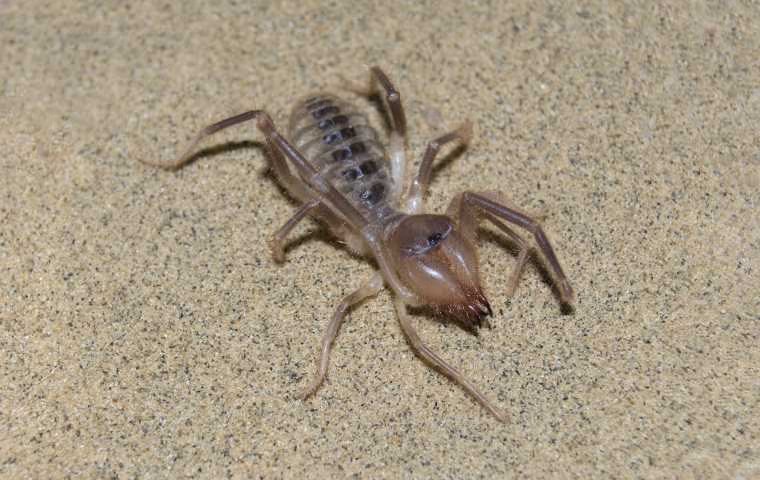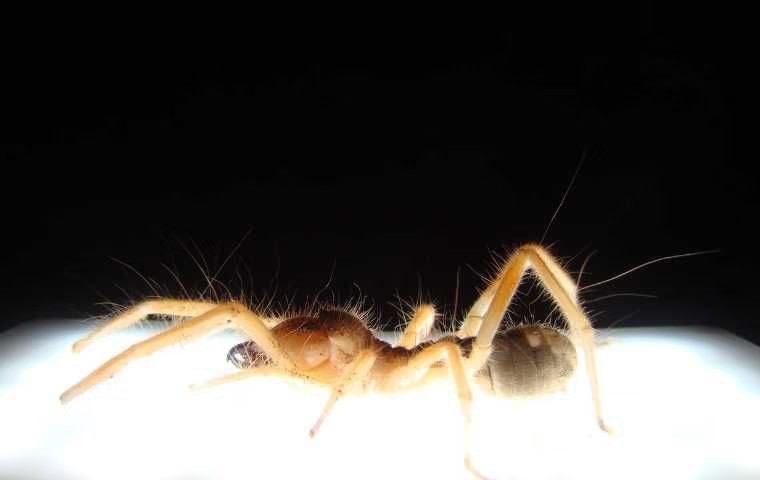How Dangerous Is a Camel Spider Bite?
There are many wild stories about spiders, but none of them is more fear-inducing than the narrative that a camel spider attacks humans and uses its venom to numb and chew their flesh as they sleep.
So how dangerous is a camel spider bite? Why do you need to steer away from these vicious predators? Like any puncture wound, a camel spider bite infection is possible if bacteria enter the skin. So if you have spotted a camel spider lurking in your home, take the necessary precautions. Know more about these pesky pests and the perils they bring.
Camel spiders, also known as solifuges or wind scorpions, are not actually spiders, and their venom is not considered dangerous to humans. While they are capable of delivering a painful bite, their venom is primarily used to immobilize prey, such as insects and small animals, rather than for self-defense against larger animals like humans. These creatures are found in arid regions, primarily in deserts, and are known for their speed and aggressive hunting behavior.
While the bite of a camel spider can be painful and might cause localized swelling or irritation, it is generally not considered medically significant, and severe reactions or long-lasting effects are rare. Most cases of camel spider bites can be treated with basic first-aid measures, such as cleaning the wound, applying an antiseptic, and using pain relief as needed.
Camel spiders are often the subject of myths and exaggerated stories, which have led to their reputation as highly venomous and dangerous creatures. In reality, they are not a significant threat to humans, and there is no need for excessive concern if you encounter one.
How Dangerous Is a Camel Spider Bite?
A camel spider is known to cause a very painful bite. This is because the jaws of these venomous spiders are huge and resemble crab pincers. While the bite isn’t directly life-threatening as a camel spider is non-venomous, it can leave a deep wound. The most significant risk associated with a bite is infection. It’s advisable to seek medical attention if a lesion’s appearance worsens over time.


To some, camel spiders seem the boogie men of the Middle East, but from a scientific point of view, there is absolutely no justification for the myths and stories that consider this species a real monster and a threat to humans. The exaggerations related to camel spiders are explained by their large size, but what most people don’t know is that they are not actually spiders, but a different type of arachnids more like the scorpions actually.
They have no venom, and they simply kill their prey by cutting it, which, as a matter of fact, makes them less dangerous than many spiders and scorpions. The bite of camel spiders represents no great threat to the general health condition, unless it gets infected.
The only variety of venomous camel spiders grows in India, but research is pretty scarce in the field. Apparently, the Indian camel spiders can hunt down lizards by injecting them with venom and paralyzing their movements. One of the natural enemies of the camel spiders, the scorpions are very likely to lose a fight against this giant arachnid. Due to the extended size, the camel spiders are able to cut down the sting of the scorpion and make it harmless.
The male camel spiders are smaller than the females, particularly since the latter will eat a lot before hatching. They need to accumulate some “fat” in order to be able to resist without food during the period when they have to guard the eggs. The easy way to distinguish between males and females is not just body size, but also the length of the articulated feet.
One other peculiarity of the camel spiders consists in the presence of several pairs of eyes grouped on various body parts. Thus, they may look more like spiders, but the visual accuracy is considered superior by many researchers.
Camel spiders are more likely to hunt at night; they are nocturnal creatures that enjoy shady environment even if they mainly live in warm and arid climates. The preference for shade is the actual explanation of the impression lots of people got that the spiders may be attacking them.
The human body represents a corner of shade, which will surely attract the spiders; this is the only explanation for the fact that these creatures get closer to humans in a variety of circumstances. Otherwise, they will not attack an opponent that is larger than themselves, and will not bite unless provoked.
What Is a Camel Spider?
A camel spider, which belongs to the class Arachnida, is interestingly not a true spider nor is it a scorpion. A camel spider is a solpugid and is of the order Solifugae, Latin for “those who flee from the sun.” According to the American Museum of Natural History, there are about 1,100 species of them known to date.
Aside from its eight legs and sensory organ known as pedipalps, the most distinctive part of a camel spider’s body is its massive, fearsome-looking, and powerful jaws that make up as much as a third of its body length measuring at least six inches long. Not surprisingly, the “giant camel spider” is one of the biggest.
The jaw of the camel spider allows them to crush and chew their prey, usually small bugs and insects, mites, rodents, lizards, and small birds. Camel spiders don’t have venom glands, but they make use of digestive fluids to liquefy their victims’ flesh. That way, it’s easy to suck the remains into their stomachs. Another trait of these species is that they’re notoriously aggressive and quick to attack if they’re threatened. This arachnid can run at speeds up to 10 miles per hour. Indeed, a fast-running arthropod.
